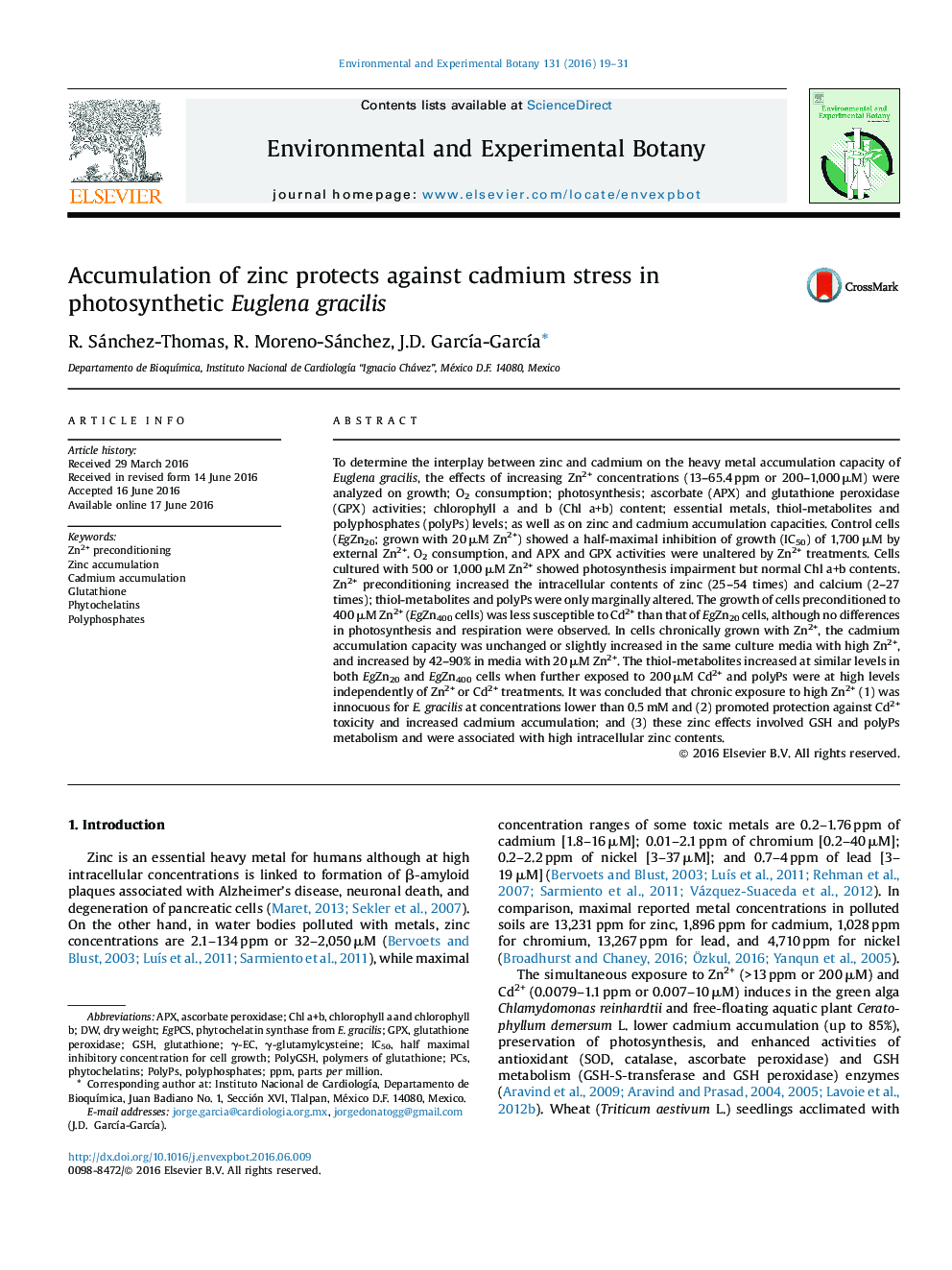| Article ID | Journal | Published Year | Pages | File Type |
|---|---|---|---|---|
| 4553995 | Environmental and Experimental Botany | 2016 | 13 Pages |
•Euglena gracilis can be classified as a Zn2+ hyperaccumulator microorganism.•High Zn2+ impaired photosynthesis but it did not affect respiration.•High Zn2+ did not trigger oxidative stress in E. gracilis.•Increased Zn2+ content did not activate PCs synthesis, but provides protection against Cd2+.•Enhanced Cd2+ accumulation was achieved in high Zn2+ grown cells when external Zn2+ was removed.
To determine the interplay between zinc and cadmium on the heavy metal accumulation capacity of Euglena gracilis, the effects of increasing Zn2+ concentrations (13–65.4 ppm or 200–1,000 μM) were analyzed on growth; O2 consumption; photosynthesis; ascorbate (APX) and glutathione peroxidase (GPX) activities; chlorophyll a and b (Chl a+b) content; essential metals, thiol-metabolites and polyphosphates (polyPs) levels; as well as on zinc and cadmium accumulation capacities. Control cells (EgZn20; grown with 20 μM Zn2+) showed a half-maximal inhibition of growth (IC50) of 1,700 μM by external Zn2+. O2 consumption, and APX and GPX activities were unaltered by Zn2+ treatments. Cells cultured with 500 or 1,000 μM Zn2+ showed photosynthesis impairment but normal Chl a+b contents. Zn2+ preconditioning increased the intracellular contents of zinc (25–54 times) and calcium (2–27 times); thiol-metabolites and polyPs were only marginally altered. The growth of cells preconditioned to 400 μM Zn2+ (EgZn400 cells) was less susceptible to Cd2+ than that of EgZn20 cells, although no differences in photosynthesis and respiration were observed. In cells chronically grown with Zn2+, the cadmium accumulation capacity was unchanged or slightly increased in the same culture media with high Zn2+, and increased by 42–90% in media with 20 μM Zn2+. The thiol-metabolites increased at similar levels in both EgZn20 and EgZn400 cells when further exposed to 200 μM Cd2+ and polyPs were at high levels independently of Zn2+ or Cd2+ treatments. It was concluded that chronic exposure to high Zn2+ (1) was innocuous for E. gracilis at concentrations lower than 0.5 mM and (2) promoted protection against Cd2+ toxicity and increased cadmium accumulation; and (3) these zinc effects involved GSH and polyPs metabolism and were associated with high intracellular zinc contents.
Graphical abstractFigure optionsDownload full-size imageDownload as PowerPoint slide
